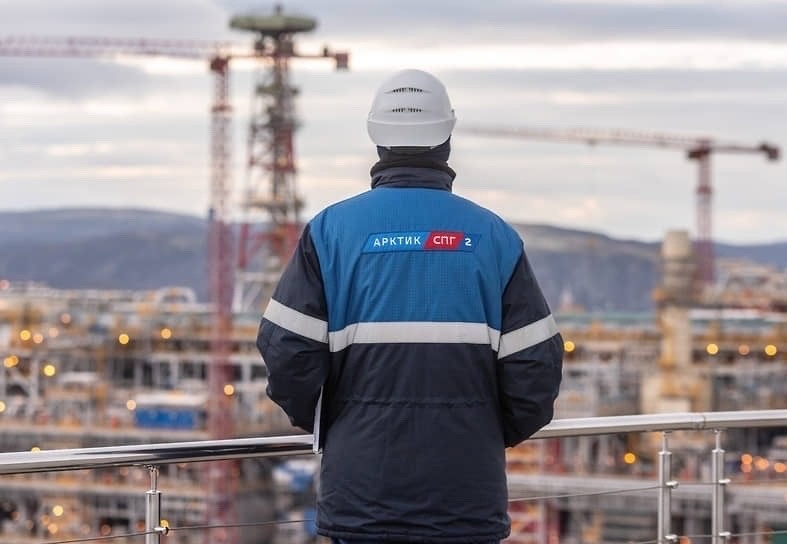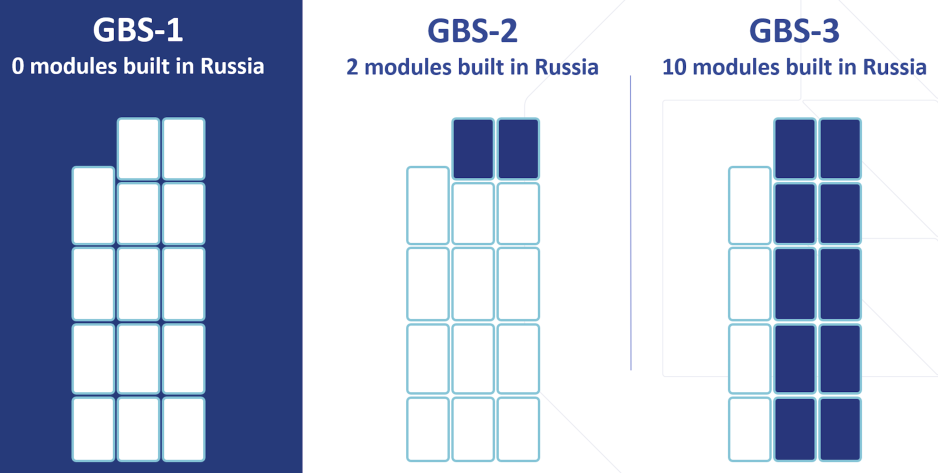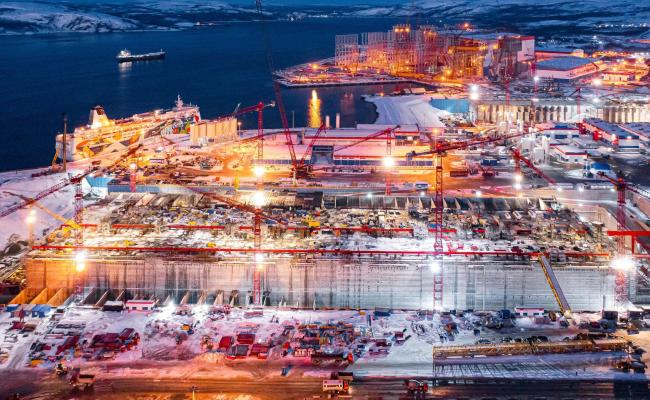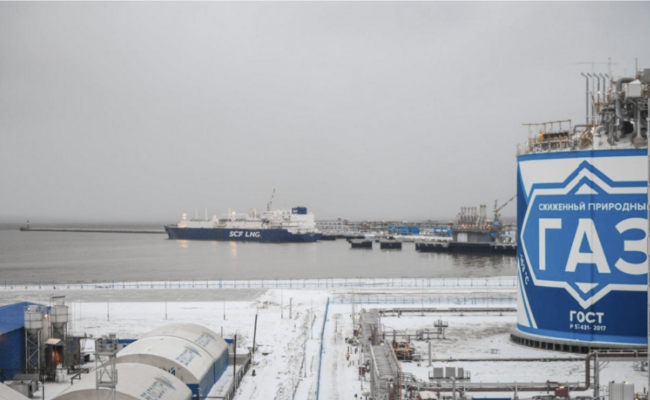Russia’s Novatek to Complete Arctic LNG 2 by 2026 Despite Sanctions

Arctic LNG 2 employee overlooking the Belokamenka construction yard. (Source: Novatek)
Novatek aims to complete all three production lines of Arctic LNG 2 by 2026 with a tentative "sail away" date for Train 3 of July 2026, company communication shows. Western sanctions have been able to delay the project, but work at the Belokamenka LNG construction center continues.
Russian liquefied natural gas (LNG) company Novatek appears confident that it will be able complete its Arctic LNG 2 plant as designed despite a host of Western sanctions.
Based on internal company communication seen by HNN, Novatek expects to tow the 3rd and final production line of Arctic LNG 2 from the construction yard near Murmansk to the Gydan peninsula during July 2026.
Earlier statements by Novatek’s French partner TotalEnergies suggested that work on Train 3 had been halted.
Reporting by Reuters also speculated that the third gravity-based platform (GBS), atop which the production line is being installed, could be repurposed for the company’s next project Murmansk LNG.
This now appears unlikely as Novatek’s timeline confirms GBS 3 will be heading to the Gydan peninsula as originally planned.
According to the communication the fabrication of individual modules faces delays of approximately 3-6 months but the target “sail away” date of the third production line remains unchanged. Company officials also appear eager to dispel any rumors about work stoppage.
Producing more in Russia
Each production line consists of 14 modules installed onto the GBS at Novatek’s own Belokamenka assembly yard. Novatek is heavily reliant on Chinese offshore yards for manufacturing of modules; all modules for Train 1 were produced in yards across China and shipped to Belokamenka aboard heavy lift vessels.
From the start the company aimed to become increasingly self-sufficient in order to “mass produce” natural gas liquefaction trains locally. The Belokamenka LNG Construction Center near Murmansk was deemed a strategic investment project by the Russian government in 2015 and designated “a key facility for the LNG equipment manufacturing industry emerging in Russia.”
For Train 2 two modules were manufactured locally and that number was expected to increase to ten for Train 3. However, that figure seems to have been too optimistic as several Chinese yards remain critically involved in the manufacturing of modules for Train 3, especially those containing power generation units and refrigeration strings.
Wison Offshore Engineering Module Development is producing at least four modules for the final production line. Two modules have already been shipped and are days away from passing along Norway’s coastline en route to Belokamenka aboard a Chinese vessel. A further two modules remain dockside awaiting pickup.
Penglai Jutal Offshore Engineering Heavy Industries, which was sanctioned by the U.S. last week for working with Novatek, appears to be close to completing at least one module based on current satellite images.
Bomesc Offshore Engineering and Qingdao McDermott Wuchuan (QMW), who produced modules for Train 1 and 2, do not currently appear to be working on modules for Train 3, though their websites continue to show their involvement in the project.
First modules are en route
Based on the company communication the “ready for load out” dates for both Chinese and Russian modules will push into 2025 and early 2026. The first four or five modules could arrive at Belokamenka this summer and fall, with the remaining modules to follow next year.
The company communication also confirms that the lack of Baker Hughes turbines, blocked by sanctions, continues to necessitate redesigns. Work on the power generation module 3-TMS-005 remains on hold currently.
Novatek launched Train 1 of the project in December 2023 but has yet to export any LNG from the plant. It will need to overcome logistical challenges, namely the lack of ice-class LNG carriers due to sanctions, if it aims to export the full nameplate capacity of 19.8 million tons per year (mtpa) of LNG and about 1.6 mtpa of gas condensate.




